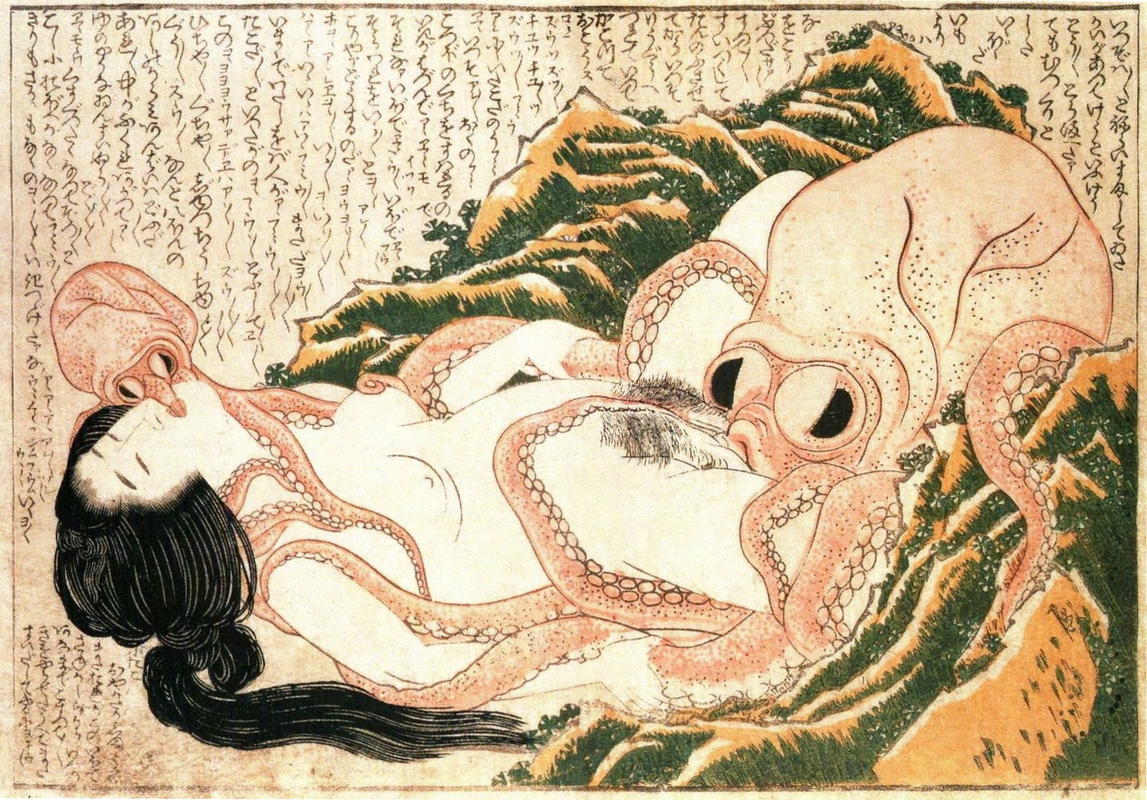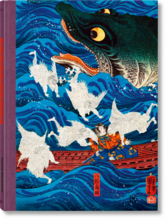More about The Dream of the Fisherman's Wife
- All
- Info
- Shop

Contributor
Hopefully this is the only depiction of octopus cunnilingus you see today.
This one was so popular it has since been emulated by Auguste Rodin and Pablo Picasso. Hokusai is better known for his rogue waves than for his rogue mollusks, but both subjects share Shintoist elements of nature. Historically, this meant that both the natural world and sexy stuff were considered entirely acceptable within mainstream Japanese art. In fact, woodcuts within this genre of erotic art (called shunga) were traditionally given to brides-to-be as instruction manuals. So awkward.
The woodcut pretty much speaks for itself, but the text in the background manages to take things a step further. According to several translations, the octopus tells the fisherman’s wife that she’s “even a greater delicacy than a potato.” Clearly he’s never had calamari.
As a whole, Hokusai’s woodcut bears a striking resemblance to James Rosenquist’s I Love You With My Ford-- right down to the spaghetti-like tentacles and baby octopus mouth looming over her shoulder. We have to wonder if Picasso and Rodin weren’t the only imitators...
Featured Content
Here is what Wikipedia says about The Dream of the Fisherman's Wife
The Dream of the Fisherman's Wife (Japanese: 蛸と海女, Hepburn: Tako to Ama, "Octopus(es) and the Shell Diver"), also known as Girl Diver and Octopi, Diver and Two Octopi, etc., is a woodblock-printed design by the Japanese artist Hokusai. It is included in Kinoe no Komatsu ('Young Pines'), a three-volume book of shunga erotica first published in 1814, and has become Hokusai's most famous shunga design. Playing with themes popular in Japanese art, it depicts a young ama diver entwined sexually with a pair of octopuses.
Check out the full Wikipedia article about The Dream of the Fisherman's Wife
















Wholesome